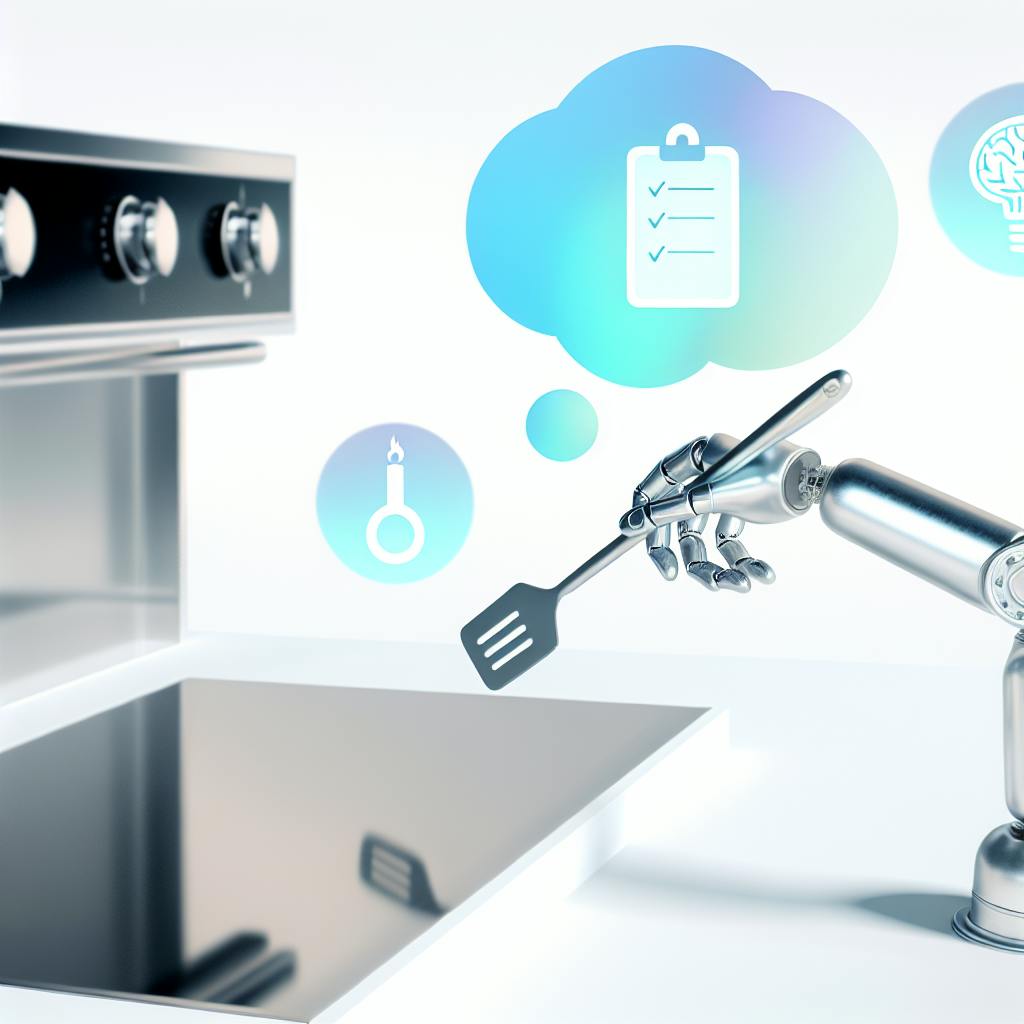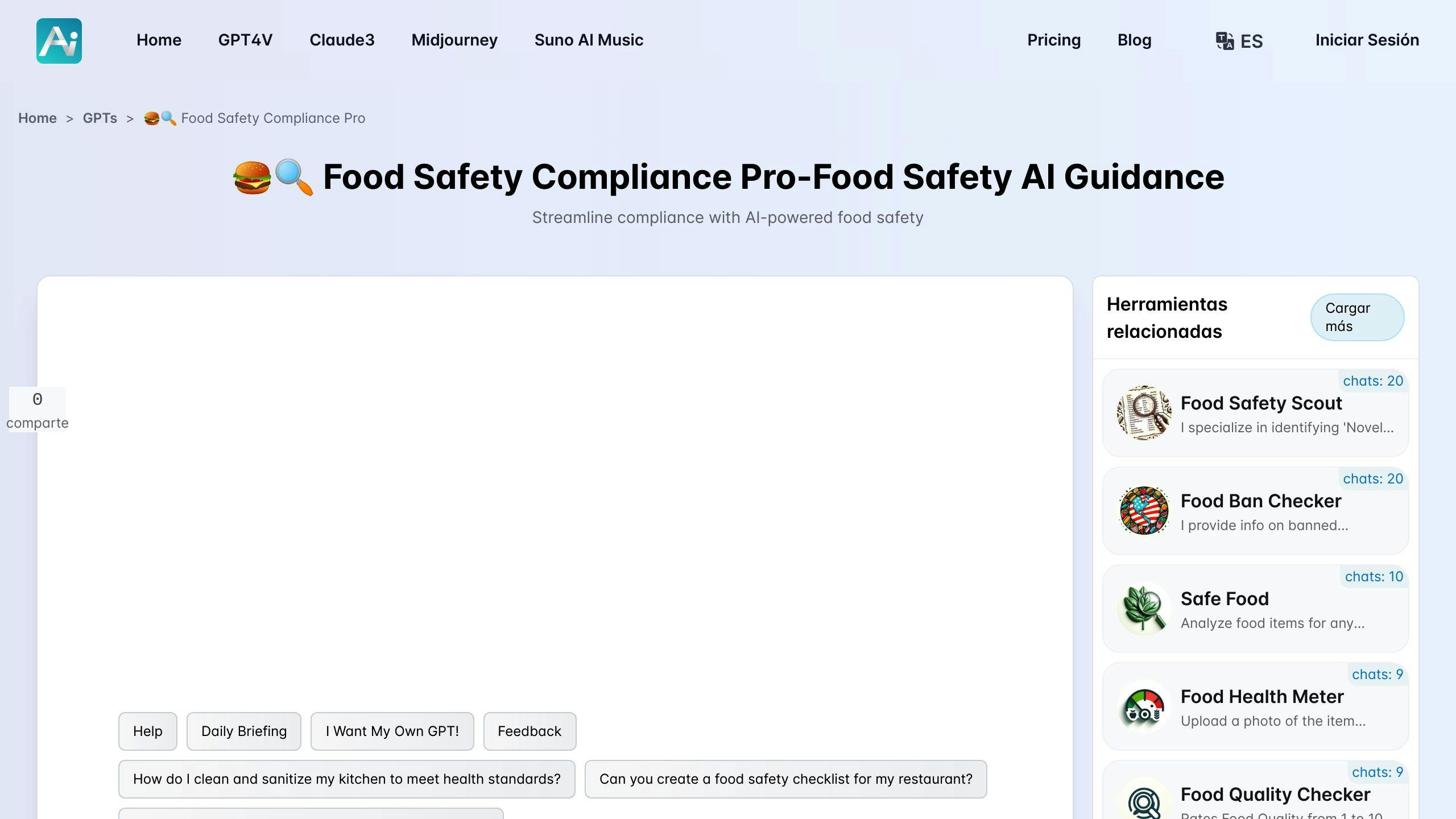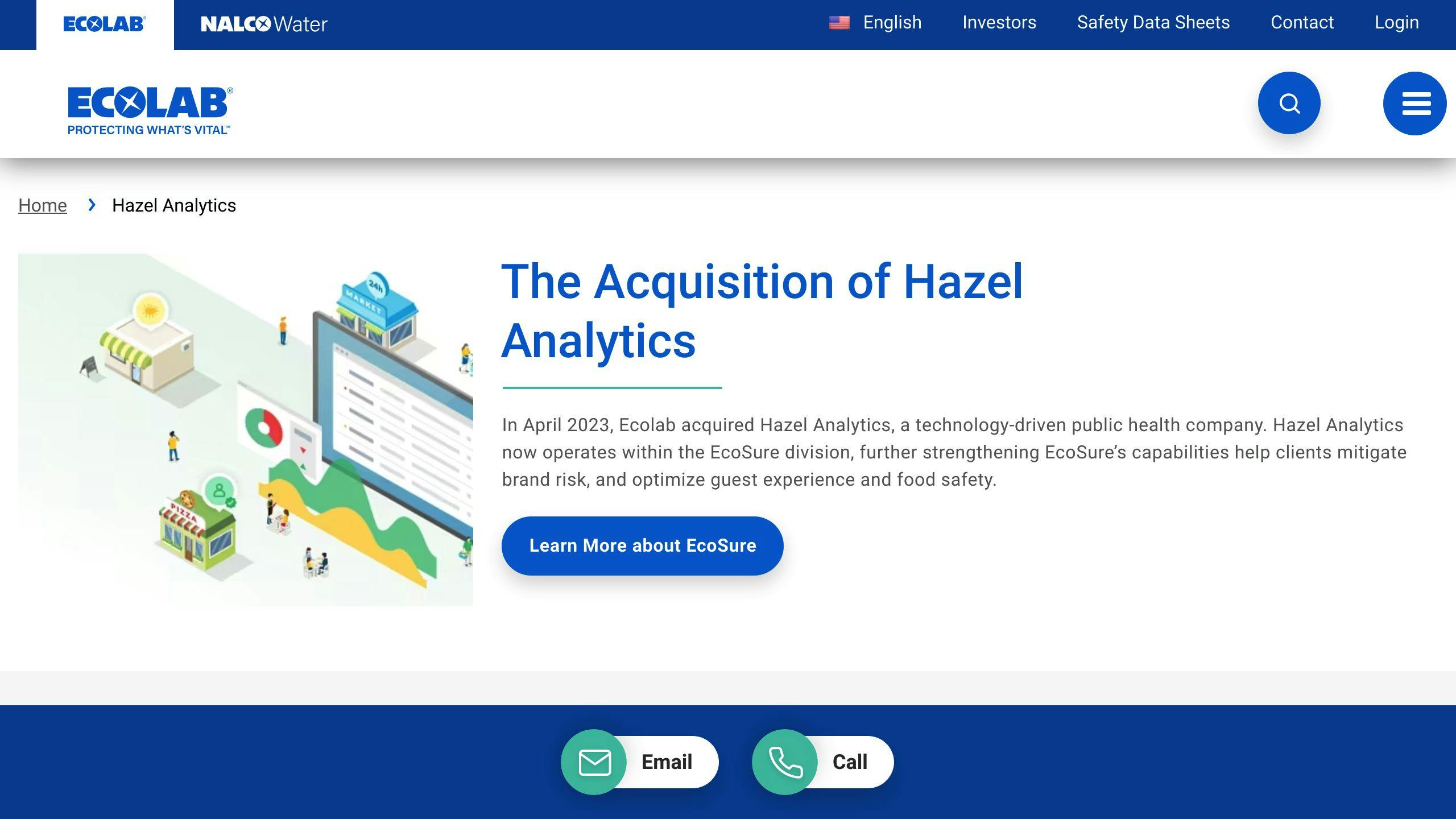May 8, 2024

AI technology is revolutionizing food safety compliance in restaurants. By leveraging AI-powered tools, restaurants can streamline their food safety protocols, reduce contamination risks, and enhance customer trust. Here are the key ways AI improves food safety:
AI ToolFunctionFood Safety Compliance ProCreates customized checklists, provides regulatory guidance, and educates staffVideo AnalyticsMonitors hygiene practices, detects SOP violations, and provides insightsSmart Temperature MonitoringContinuously monitors storage temperatures, sending real-time alertsDigital Safety DocumentationMaintains regular safety inspections and minimizes lost documentation
By prioritizing innovation and technological advancements, restaurants can stay ahead of the curve and ensure a safe and healthy food environment for their customers.
AI technology can greatly improve food safety measures in restaurants. By using accessible technologies, businesses can support their staff, ensuring safer food preparation environments and enhancing the overall dining experience for customers.
AI-powered cameras and sensors can track food safety parameters, providing real-time monitoring and alerts for potential hazards. This technology is available to both franchises and independent restaurants, making it easier to maintain high food safety standards.
TechnologyFunctionAI-powered camerasTrack food safety parametersSensorsProvide real-time monitoring and alerts for potential hazards
AI can analyze diverse data sources, such as internal audits, customer feedback, and supply chain information, to identify trends in food safety performance. This enables restaurants to direct targeted improvements, reducing the risk of foodborne illnesses and enhancing overall food quality.
By utilizing AI to generate, recommend, and evaluate food safety corrective actions, restaurants can optimize their safety protocols. AI considers cost and quality implications, providing optimized food safety solutions that balance business needs with customer safety.
How AI Optimizes Safety:
AI technology plays a crucial role in maintaining food quality control in restaurants. By leveraging machine vision and other AI-powered tools, restaurants can ensure the quality of their food products, detect contaminants, and automate complex safety tasks.
Machine vision is a powerful AI technology that enables restaurants to automate quality checks. This technology can be used to detect bones in fish and fish products, ensuring that products are safe for consumption. It can also be applied to the packaging industry, where it can detect errors in manufacturing or expiration dates and times.
IndustryApplicationFish and fish productsDetect bonesPackagingDetect errors in manufacturing or expiration dates and times
Vision AI can be used to create interactive, real-time training scenarios that keep restaurant staff updated with the latest food safety regulations. This technology enables staff to identify and fix food safety issues in real-time, ensuring that they are engaged and up-to-date with the latest regulations.
AI-powered virtual assistants and analytical AI can assist in complex tasks such as:
These tools can analyze vast amounts of data, identifying patterns and anomalies that may indicate a hazard. By leveraging AI-powered tools, restaurants can optimize their safety protocols, reducing the risk of foodborne illnesses and enhancing overall food quality.
By integrating AI technology into their food quality control processes, restaurants can ensure the quality of their products, detect contaminants, and automate complex safety tasks. This can lead to improved customer satisfaction, reduced risk of foodborne illnesses, and enhanced overall food quality.
AI tools have revolutionized the way restaurants approach food safety compliance. One such tool is Food Safety Compliance Pro, which assists restaurants in creating checklists, providing regulatory guidance, and educating staff on foodborne illnesses and hygiene protocols.

Food Safety Compliance Pro is an AI-powered tool that helps restaurants streamline their food safety compliance processes. With this tool, restaurants can:
The tool's AI technology analyzes data from various sources to provide insights into safety standards, enabling restaurants to identify areas for improvement and optimize their safety protocols.
Getting Started with Food Safety Compliance Pro:
StepAction1Sign up for an account on the Food Safety Compliance Pro platform2Customize the tool to meet your restaurant's specific needs3Access training resources to educate staff on foodborne illnesses and hygiene protocols4Analyze data to gain insights into safety standards
While Food Safety Compliance Pro provides a comprehensive framework for food safety compliance, restaurants may need to tailor their checklists and protocols to meet specific operational requirements. AI guidance can help restaurants customize their safety protocols by:
By customizing their safety protocols with AI guidance, restaurants can ensure that their safety efforts are targeted, efficient, and effective.
Video analytics has transformed the way restaurants monitor hygiene practices. By using AI-powered video analytics, restaurants can ensure a vigilant monitor for hygiene practices, detect standard operating procedure violations, and gain valuable insights into improving business performance.
AI-powered video analytics can detect whether kitchen staff are wearing gloves and hairnets, ensuring they adhere to essential hygiene standards. In case of a violation, the system can send real-time alerts, enabling prompt corrective action. This proactive approach helps prevent contamination risks and ensures a safe food environment.
Hygiene PracticeAI MonitoringWearing gloves and hairnetsDetects non-compliance and sends alertsHand wash detectionMonitors hand washing frequency and technique
Video analytics can also indirectly impact food quality by monitoring critical factors such as freezer door open detection, ventilation monitoring, and illumination monitoring.
Food Quality FactorAI MonitoringFreezer door open detectionDetects open freezer doors and sends alertsVentilation monitoringMonitors ventilation systems to prevent heat buildupIllumination monitoringEnsures proper lighting in food preparation areas
By leveraging video analytics for hygiene monitoring, restaurants can ensure a safe and healthy food environment, reduce the risk of contamination, and improve overall business performance.
Discover cutting-edge technology solutions that can enhance food safety protocols and compliance in restaurants.
Smart temperature monitoring devices and sensors help restaurants maintain optimal storage temperatures. These devices detect even slight temperature deviations, sending real-time notifications to management to prevent spoilage and contamination.
Temperature RangeSmart MonitoringRefrigerator (39°F - 41°F)Continuously monitors temperature, sending alerts for deviationsFreezer (-18°C - -15°C)Real-time monitoring and notification for temperature fluctuations
Digital checklists help restaurants maintain regular safety inspections and minimize the risk of lost documentation. With digital solutions, restaurants can track compliance, identify areas for improvement, and provide evidence of adherence to food safety regulations.
The data collected from digital solutions helps restaurants recognize and address areas for improvement in their food safety practices. By analyzing trends and patterns in temperature monitoring, safety inspections, and staff training, restaurants can identify vulnerabilities and implement targeted measures to enhance their food safety protocols.
AI has been successfully integrated into food safety inspection processes by various restaurants and food service entities. This section explores case studies that highlight the impact and benefits of AI adoption in food safety.

Hazel Analytics has helped food service operators standardize their food safety inspection processes. By using AI-powered data analytics, Hazel Analytics provides strategic insights to industry players, enabling them to identify areas for improvement and optimize their food safety protocols.
Case StudyBenefitsMajor fast-casual restaurant chainAddressed high-risk events, benchmarked performance against competitors, and improved overall food safety practices
The Chicago Health Department collaborated on a project that utilized visual text analytics and generative AI to process numerous inspection reports. This innovative approach enabled the department to:
By applying AI-driven text analytics, food safety inspectors can focus on high-risk areas, prioritize their efforts, and make more informed decisions.
AI has revolutionized food safety compliance in restaurants. By using AI-powered tools, restaurants can streamline their food safety protocols, reduce contamination risks, and improve customer trust.
The successful implementation of AI in food safety compliance has been demonstrated through various case studies. As the food industry continues to evolve, the importance of AI in food safety compliance will only continue to grow.
AreaImpact of AIFood Safety ProtocolsOptimized and streamlinedContamination RisksReducedCustomer TrustEnhancedOperational EfficiencyImproved
By prioritizing innovation and technological advancements, restaurants can stay ahead of the curve and ensure a safe and healthy food environment for their customers.

Enter your information in the form to receive a call from Loman and place an order like a customer would!